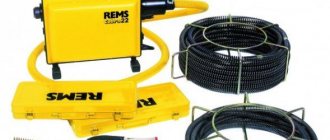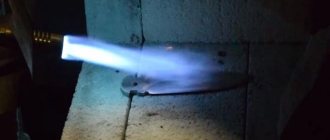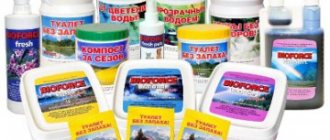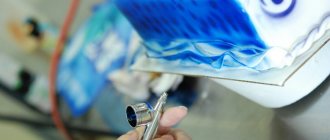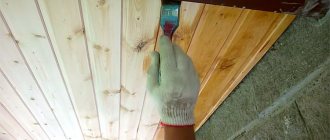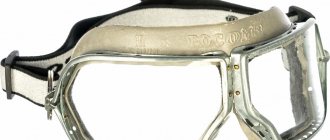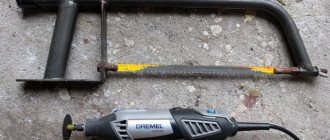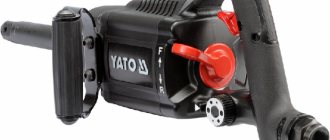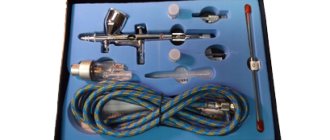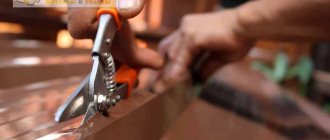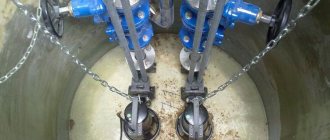Greetings, my dear readers! Today we’ll talk to you about abrasive detergents. We will find out what belongs to them and what substances are included in their composition.
Abrasives are substances of increased hardness, used in a massive or crushed state for mechanical processing of other materials.
They are used for: crushing, grinding, cutting, cleaning, polishing, etc. First of all, they are used in all types of industrial and craft processes. For example, in construction, carpentry, mechanical and automotive industries. Most commonly, abrasives are used for grinding, honing, polishing, sanding and finishing other materials.
Abrasives are also widely used in cleaning. And they take their rightful place along with other detergents.
Types of Abrasives
There are two main types of abrasives. And they are usually classified according to greater or lesser hardness:
- natural (diamonds, sandstone, quartz, etc.);
- artificial (aluminum oxides, zirconized aluminum oxides, silicon carbides, etc.).
Abrasive cleaners are designed to remove relatively large amounts of dirt. This dirt is often found on various areas and surfaces.
They come in powder and liquid or paste form. And they contain a kind of built-in lubrication. This lubricant primarily helps reduce the harsh friction required to remove contaminants. And this category also includes dishwashing sponges.
The abrasive effect is provided by many ingredients. For example, small particles of minerals. As well as a mesh of fine steel wool, copper, nylon or metal particles. And these mineral particles are embedded in a matrix of hard plastic.
The degree of abrasiveness of products varies. Over a long period of time, excessive use of some abrasive cleaners can remove the glaze. And, for example, coating on some surfaces. Before using a product, always read and follow the manufacturer's instructions for that product.
Magnetorheological polishing methods
With the rheological polishing method, a “physical” abrasive tool is not used at all. Materials are mixed with liquids, in the thickness of which they move under the influence of electric fields. This method is in many ways similar to the one described above, it is also used for processing certain parts in precision engineering and similar industries.
Abrasive products or cleaning pads, steel wool or sand paper are not recommended. It is always recommended to test a small, inconspicuous area to ensure that the cleaner does not adversely affect or damage the surface being cleaned.
Prolonged exposure to bleach will cause discoloration, so it is recommended to use it with caution. Hard surface For everyday care, use a damp cloth with soap and water. If you prefer, ammonia-based cleaners can be used and wiped dry. Do not expose the surface to harsh chemicals such as paint stripper, nail polish remover, or drain cleaners. If these chemicals come into contact with a surface, wash them immediately with water using appropriate precautions.
In general, in recent years, production has increasingly begun to use abrasives pre-mixed with liquids or synthetic resins. A good example is the moistened abrasive paste GOI based on It has been known for a long time, but only in recent years has special attention been paid to it. The reason is simple - the low cost of this compound and its high efficiency in polishing. In addition, the abrasive paste acts gently on the material being processed without scratching or damaging it.
Do not use abrasive products such as scouring pads, steel wool or sandpaper as these materials may damage the surface. These surfaces have a non-porous surface, making them nearly impervious to spills and liquids. However, regular cleaning is recommended, as with any work environment. A soft towel with a mild detergent is all you need.
Do not use harsh abrasives, scouring pads or powdered cleaners as they may dull or damage the non-porous surface. Epoxy resin work surfaces are durable, non-porous, heat, flame and moisture resistant products. Regular cleaning is recommended to ensure a clean, uncontaminated working environment. Use a soft towel and mild soap and water for general cleaning. Acetone should be used to thoroughly clean the surface where possible.
Powder Cleaners
Powdered cleaning products have long taken their place among household cleaning products. In addition, their cleansing and polishing effect is provided by fine mineral particles. These are particles such as calcite, feldspar, quartz and silica. In addition, powder cleaners contain small amounts of surfactants to remove greasy stains. First of all, such as the oily film that is often found in the sink after washing dishes. Where food, drink or mold stains need to be removed, a bleaching agent is typically used. If removing rust stains is an important feature of the product, it may contain oxalic acid or sodium bisulfite.
Use of dry and liquid abrasives
Powdered abrasives are popular. They are often used before polishing various surfaces. The products are created on the basis of small mineral particles of lime spar, feldspars, silica, etc.
Powdered dishwashing detergents also include surfactants to remove greasy stains. Powders are also used when washing dishes from food residues, drinks or mold. These products contain bleaching agents to remove stubborn stains on dishes.
Rust is removed using abrasive powders. These cleaning products contain ethanedioic acid or sodium bisulfite. The abrasive particles included in liquid products are softer than those in powders.
For this reason they provide a gentle abrasive effect. They are not suitable for heavy dirt and old stains.
Liquid cleaners
Liquid cleaners are a paste or suspension of solid abrasive particles in a thickened liquid matrix. They also contain more surfactant and milder abrasives than some powder products. As a result, their abrasive action is usually more gentle than that of powders.
Abrasive liquids
The percentage of solids in different abrasive products can vary significantly. Sometimes they are included in a liquid medium - in this case we are talking about an abrasive liquid. Examples are liquid cleaning products (household chemicals), paints containing quartz sand, sand suspensions, caustic sludge, food products (sugar suspensions, chocolate spreads with pieces of nuts), cosmetology (scrubs, abrasive toothpastes), etc. Of course, not all of them are used for surface treatment. Nevertheless, these media have abrasive properties, which must be taken into account when selecting equipment that works with them.
Read more about pumping abrasive liquids
can be read here:
https://www.arkronix.ru/fluid-types/abrazivnye-zhidkosti/
Washing pads
Dishwashing pads, like powdered cleaning products, are products with a long history of use. In the most widely used types, a ball of fine steel wire provides the cleaning action.
For chemical cleaning and as a polishing agent, steel wool can be filled with a cleaning mixture. Of course, the main ingredient is soap.
On metal surfaces in particular, soap and a metal pad can provide effective cleaning. And also give the surface a pleasant shine.
Some cleaning pads (sponges) are made of stainless materials. These can be materials such as copper mesh, stainless steel wire or nylon. And others are made of plastic coated with small abrasive particles. Therefore, these pads are not soaked in the cleaning mixture.
Additionally, there are some cleaning products that disinfect surfaces. They contain an antimicrobial agent to reduce the bacterial population. These bacteria live on contaminated surfaces. Such agents may include pine oil, quaternary ammonium compounds, or sodium hypochlorite. In addition, these products will be labeled as a “disinfectant” or “germ killer.” And in order to use this label, products must be approved by the Ministry of Health and the Center for State Sanitary and Epidemiological Surveillance.
For example, there are dishwashing sponges that consist of a cellulose sponge with a polyurethane base. As a result, these pads significantly reduce surface scratching.
For what tasks is this or that abrasive suitable?
For specific needs, superabrasives are needed, which we have already briefly mentioned above. They are also available in the form of emery cloths, abrasive brushes, discs and wheels. Thus, when producing knives from standard grades of steel, manufacturers use aluminum oxide and silicon carbide. Mass production usually requires greater use of sandblasting machines: stainless steel, ball bearings and mass processing of especially hard woods. However, in most cases, industrialists remain faithful to the “good old” aluminum oxide. This one is cheap but still very effective.
Types of abrasive detergents
I propose to take a closer look at the list of types of abrasive detergents and see examples of their applications:
- Dry abrasives
These include powder cleaners that contain small particles. They typically consist of silica, quartz, calcite and feldspar. Cleaning products also contain small amounts of surfactants. First of all, they remove the oily residue that remains around the sink after washing dishes. Typically, you should use a disinfectant with abrasive materials. This is the case if you are cleaning surfaces with stains from mold, drinks and food.
But, if you want to get rid of stains, use dry abrasives with sodium hypochlorite or oxalic acid.
Meanwhile, the list of the most famous and effective abrasive detergents is headed by soda. Baking soda is a weak alkaline. It is known that some contaminants are acidic in nature. Therefore, this alkaline material can be useful in removing them.
The non-scratch abrasive action of dry baking soda helps remove light stains. This happens because baking soda crystals are harder than soil. But softer than sensitive surfaces such as fiberglass. Baking soda can also be used to deodorize refrigerators and freezers. First of all, baking soda destroys and also absorbs food odors.
- Wet abrasives
Of course, these include liquid cleansers. They are a suspension or paste of solid abrasive particles. As a result, they contain more surfactants and softer abrasives. And because of this, the abrasive action is gentler than in powder cleaners.
Abrasive grains
The most widely used types of abrasive grain for the production of abrasive tools on a flexible basis are:
Aluminum oxide (electrocorundum)
Crystalline aluminum oxide (Al2O3). The raw materials for the production of aluminum oxide are bauxite clays containing at least 60% Al2O3. Aluminum oxide received its second name due to the technological process of melting in electric arc furnaces using the energy of an electric arc at a temperature of more than 2000 C. Conventional metallurgical furnaces are not capable of separating coal coke. The melting effect can be enhanced by a magnetic field in specialized induction furnaces. When the melt cools, crystallization occurs in its upper part with the formation of a substance with an aluminum oxide content of more than 97%. Through further cleaning, crushing and screening, abrasive grains are obtained for the production of abrasive tools. Depending on the degree of hardness and purity of the 94 to 99% aluminum oxide, varieties of corundum are obtained. Electrocorundum is especially suitable for processing metal and wood, it is a component for the production of cutting and grinding wheels and other abrasive tools.
Silicon carbide (SiC)
Obtained by synthesizing natural quartz sand and petroleum products. In an electric furnace at temperatures above 2000 C, the mixture crystallizes, resulting in the formation of silicon carbide. Silicon carbide grains, due to their hard and crystalline structure with high cutting ability, are suitable for processing varnish, paint, putty, glass, ceramics, stone, cast iron, titanium, rubber and various polymers. Silicon carbide grain is used to make the base from which paper or fabric-based sanding belts and waterproof sanding paper are produced.
Zirconium corundum
It is obtained as a result of high-temperature (approximately 1900 C) melting of a mixture of aluminum oxide Al2O3 and zirconium dioxide ZrO2 in special tilting electric arc furnaces, using the “drain” method, followed by intensive cooling of the melt, which makes it possible to obtain microcrystalline material with primary crystal sizes up to 50 microns. with a self-sharpening effect, high density and microhardness. Zircon alumina has high toughness and high abrasiveness, which are ideal for machining stainless steel. Zircon corundum is used in the manufacture of the base from which sanding belts, end flap wheels, fiber wheels and other abrasive tools are produced.
New modified types of abrasive grain
Recently, new modified types of abrasive grains have appeared that have high cutting abilities and excellent durability due to self-sharpening. These types of abrasive grains include ceramic electrocorundum (ceramic corundum). Varieties of abrasive grains include structured abrasives Trizact - pyramids of microparticles of abrasive material, which, as they wear out, include new abrasive particles in the work until they are completely worn out.
Abrasive tools
Cleaning pads, like powdered cleaners, have long been used in the home. In the most common types, a ball of fine steel wire provides the cleaning action.
For chemical cleaning and as a polishing aid, steel wool is usually filled with a cleaning mixture. First of all, the main ingredient is soap. This soap along with a metal pad can provide effective cleaning. In other words, to give surfaces an attractive, clean look and shine. However, with prolonged use, the cleaning mixture is used up. And the metal pad begins to collapse over time.
Some dish sponges are made from non-disintegrating materials. These include things like copper mesh, stainless steel wire or nylon. While other sponges are plastic material. This material contains small particles of abrasives. These pads are not saturated with cleaning mixture. And to remove contaminants they rely only on mechanical stirring.
Color-coded multi-layer washcloths are open design washcloths. They are made from durable synthetic fibers, abrasive minerals and resin. Additionally, these scouring pads are designed for easy and intensive cleaning. At the same time, blue and white washcloth colors are usually the most gentle. They are used for delicate surfaces such as ceramics and chrome. And green or black is for intensive cleaning, such as cleaning a frying pan.
Many environmentally conscious companies are producing new scrubs. For example, they incorporate fibers from the agave plant into synthetic fibers.
Main components
Silica sand is the most popular abrasive for sandblasting bridges and other steel structures. In this case, very effective rust removal occurs, which significantly increases the durability of engineering structures. This process requires high density abrasives. As a rule, cleaning metal structures involves the use of compressed air. It acts as a particle accelerator and does not have an additional corrosive effect.
Most steel processing consumables, including cooling water, lubricating oil, pickling acid and stirring paper, are recycled at the plant or by specialized contractors. Stainless steel manufacturers and recyclers recycle their scrap and consumables, including precipitated pickling acid residues for recycling.
Because stainless steel is made from corrosion-resistant alloys, it has a relatively long service life. Because stainless steel requires minimal maintenance, and while more expensive initially, it offers more attractive "life cycle" benefits compared to other alternatives such as carbon steel.
However, in some cases water can also be used. In particular when cleaning concrete structures. Almost all structures built in the coastal zone periodically need this. The fact is that over time a thick layer of salt and other aggressive compounds grows on their surface. Fresh water, to which the appropriate material (abrasive) has previously been added, not only removes them from the concrete, but also produces “desalting.” Again, this measure significantly increases the service life of buildings.
Because stainless steel is so easy to maintain, it is an obvious choice for food and beverage manufacturing and food service equipment. Additionally, there are no proven health risks from normal use of stainless steel. However, all possible risks from alloy elements such as nickel and chromium are constantly checked by experts.
Stainless steel: a green product!
Julienne stainless steel is one of the most environmentally friendly products currently available in the residential, commercial and industrial markets. Julienne stainless steel is 100% recyclable and retains very good value on the used steel market.
Music Lover's Remedy
Another relatively new abrasive cleaner is melamine.
Melamine foam erasers require only water to effectively remove most stains. Best of all, no chemicals or soap are required. The only downside is that melamine erasers wear out quickly. In the same way as pencil erasers.
To clarify, during the manufacturing process, melamine resin is converted into foam. As a result, its microstructure becomes very hard, like glass. And so it acts on stains like super-fine sandpaper.
The open microstructure of melamine foam with cavities is its second strength. First of all, it is able to scrape off stains with its extremely hard microfibers.
The evolution of industrial abrasives
The history of industrial abrasives for grinding wheels began with natural minerals - quartz and silicon, as well as corundum. It was the latter, by the way, that first received the name “emery”. This was the first abrasive block. The abandonment of natural minerals began in the first half of the twentieth century and was almost completely completed by its end. And the point here was not only the high cost of natural materials. The fact is that they all have strictly defined properties that cannot be changed in any way. Synthetic abrasives, created under certain conditions, can be completely different and better suited for solving some atypical problems.
The right abrasive for every purpose
You decide which sanding tool you use. Such as wood, varnish or plaster.
The secret of perfect surfaces
The high-quality backing guarantees tensile strength, edge resistance and durability of sandpaper and abrasive mesh, even under heavy loads.
The best grinding results are obtained from grains that are ideally suited to the material to be crushed. Special coatings prevent clogging and extend service life. Every construction site and surface is different. The specialist in sanding work and maximum sanding success.
For example, through new technologies, a compound with a particle shape resembling a sliver can be created. This material is ideal for applying to the surface of polishing wheels. In addition, it is possible to create completely new materials by combining, for example, titanium oxide with aluminum compounds. These abrasives are ideal for processing particularly hard surfaces.
If you wear a lot, you will find an abrasive that will convince you when it is worn and removed. As a grinding specialist, we know these requirements and are constantly improving our abrasives. This way you always have the best abrasive in your hands. To achieve maximum sanding success, two things are important: the sanding tool and the abrasive. Each processed material and each device type has its own requirements. Many years of experience and constant optimization of all parts lead to optimal grinding results.
Disinfection
First, some cleaning products disinfect surfaces. They contain an antimicrobial agent. Therefore, it reduces the population of bacteria living on contaminated surfaces.
Such agents may include pine oil, quaternary ammonium compounds, or sodium hypochlorite.
Application of abrasives
Soft abrasives are suitable for surfaces such as laminate, countertops, tiles, sinks, bathtubs, dishes and glass.
Coarse or harsh abrasives can be used to clean stainless steel racks and oven baking racks . However, harsh abrasive materials can damage many surfaces. First of all, these materials are usually sold for removing stubborn stains.
Regular use of these materials can scratch the shiny surface of sinks, bathtubs and kitchen appliances. And, as a result, they can make them dull and rough.
Most importantly, always check the manufacturer's instructions before using abrasives on any surface.
Abrasive processing of materials
Special abrasive tools are made from abrasives. They, unlike blade (metal) ones, do not have a continuous cutting edge. This function is performed by a solid grain structure, each of the grains is a cutter in it. These abrasive particles are bonded to each other with a binder or combined into some kind of product (it can be a wheel, a stone, sandpaper, a brush), and collectively act on the working surface with their cutting edges, removing the finest chips with them (this layer can be as little as several microns).
Abrasive materials are in demand for different types of processing:
- grinding - can be round, flat, circles, tape, and also preliminary and finishing;
- lapping;
- water jet treatment;
- ultrasonic;
- sandblasting;
- polishing (sometimes preliminary, mirror);
- honing (this is the finishing treatment of internal cylindrical parts, such as automobile cylinders);
- superfinishing (involves minimal material removal);
- tumbling (this is the cleaning of small parts from scale, corrosion, burrs, etc.);
- cutting, cutting;
- sharpening
